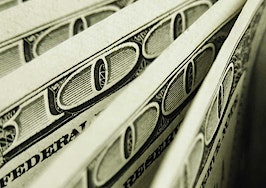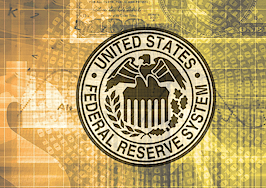- We are almost at our all-time lowest mortgage rate.
- Sooner or later mortgages are going where the 10-year Treasury note goes -- and that's down.
- The emergency situations overseas which have conspired to cause this rate drop can calm down at any time, so this is the time for bird-in-hand.
Freddie Mac reported on Wednesday that 30-fixed mortgages have dropped to the lowest level since early 2013, “3.625 percent plus .5 points.”
But rates are really lower than that: a good loan can be had at 3.625 percent without the fractional point and probably a credit versus closing costs. Some cut-rate vendor might touch 3.50 percent (as of Thursday, February 11).
Freddie uses a Jurassic Park survey method, asking lenders early each week and reporting findings on Thursdays, although mortgage rates change every day in real time, often during the day. By the time Freddie reports, the dinosaur has passed to the great beyond.
[graphiq id=”7ZRO7UmsmPP” title=”30-Year Fixed Rate Mortgage Rates for the Past 6 Months” width=”600″ height=”490″ url=”https://w.graphiq.com/w/7ZRO7UmsmPP” link=”http://mortgage-lenders.credio.com” link_text=”30-Year Fixed Rate Mortgage Rates for the Past 6 Months | Credio”]
The all-time lows in Freddie’s survey: “3.32 percent plus .7 percent points” in December 2012. That was really 3.50 percent without points. We’re almost there right now. Not bad: we were almost 4.25 percent on New Year’s Day, and rates were certain to rise in 2016, right?
The driver behind all long-term rates is the U.S. 10-year Treasury note. Mortgages, even government-guaranteed ones, are riskier than Treasurys, so they trade at a spread to Treasurys (not credit risk, but prepayment risk — consumers may refi at any time).
That spread is variable, but sooner or later mortgages are going where the 10-year goes. Today, the 10-year briefly broke below 1.60 percent. The all-time low in July 2012 was a hair under 1.40 percent. Almost there, too. New Years Day: 2.25 percent.
Don’t ask why. I’ll get to that later today in my credit market report.
Should your buyers wait?
The important questions: Are we going lower, and should I wait?
The odds are good that we’ll go lower, although it may take a while after this straight-line drop.
Wait? Are you nuts?
The emergency situations overseas which have conspired to cause this rate drop can calm down at any time. No fix necessary — just calm down. Oil is not going to trade below $30 for long (at least I hope not … if so, it would reflect unpleasant goings-on). This is the time for bird-in-hand.
Okay, but how low could mortgages go? Mortgages have some embedded costs: the cost to originate (sales, staff, underwriting), the cost to securitize, the cost to derivatize and hedge (to minimize he damage by consumers’ refis), and some inevitable spread above Treasurys, usually 1.80 percent by itself. So in 2012, I thought absolute mortgage zero was a little above 3.00 percent.
But now we have “negative” interest rates spreading around the world. Banks must pay in Europe and Japan to park cash safely with the central bank. Buy a German or Japanese ultra-secure bond, and you may have to pay 103 for the right to receive 100 at maturity.
Say the unmentionable. Things are good in the U.S., but ugly outside, which makes dollar things very attractive. Before all of this is over, the mortgage first-digit might … might … be two.
Lou Barnes is a mortgage broker based in Boulder, Colorado. He can be reached at lbarnes@pmglending.com.









